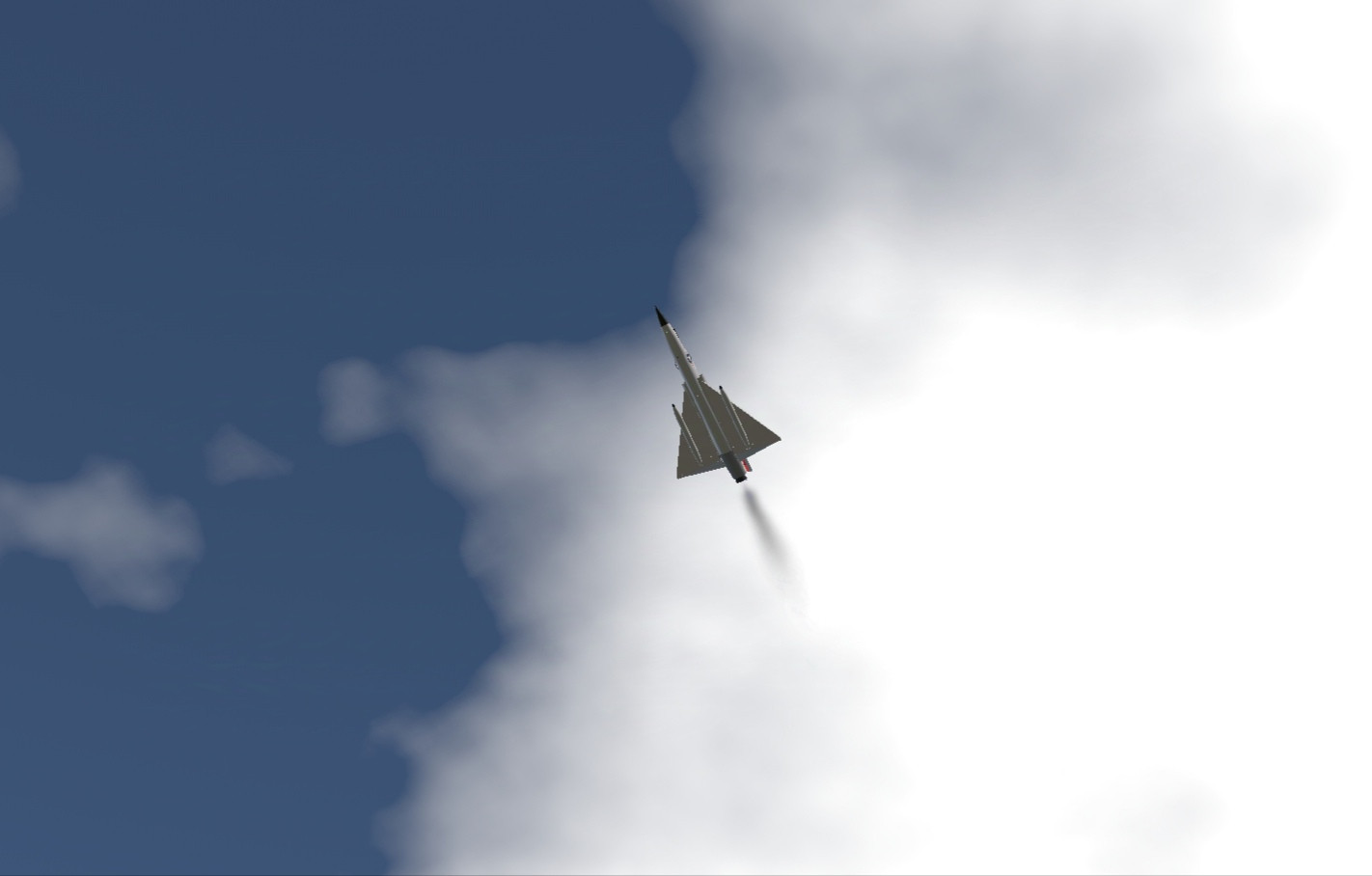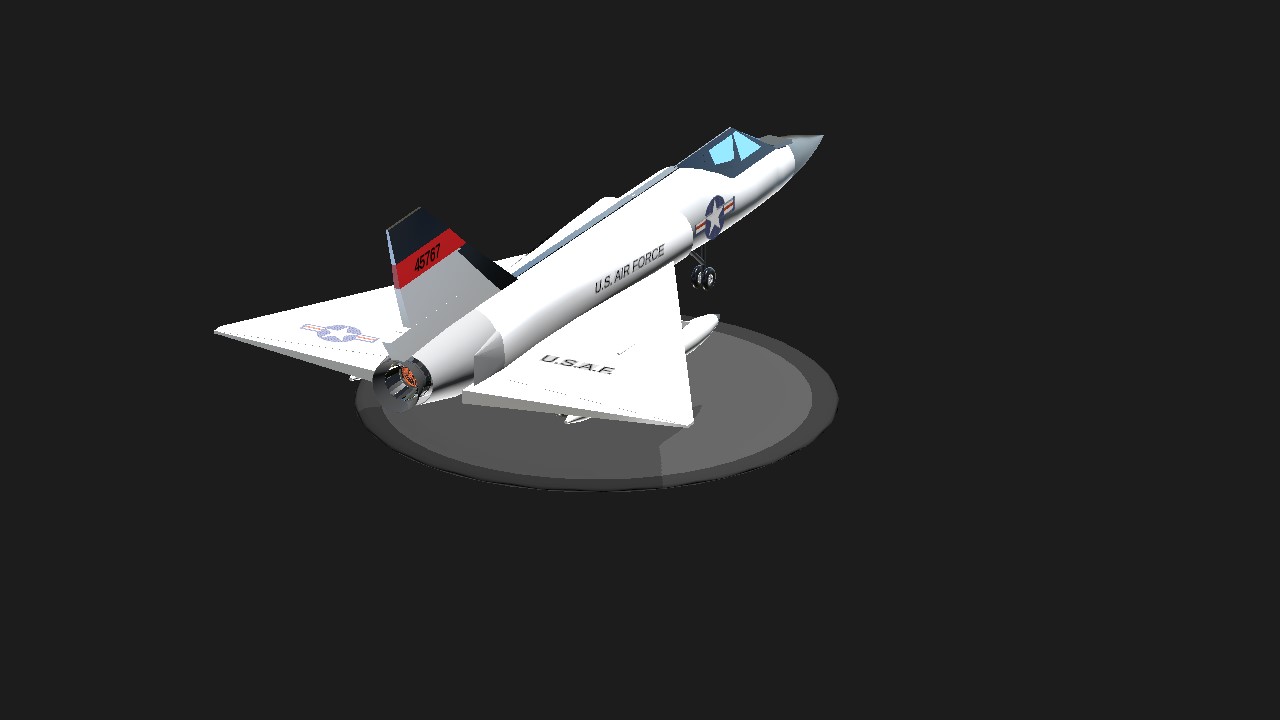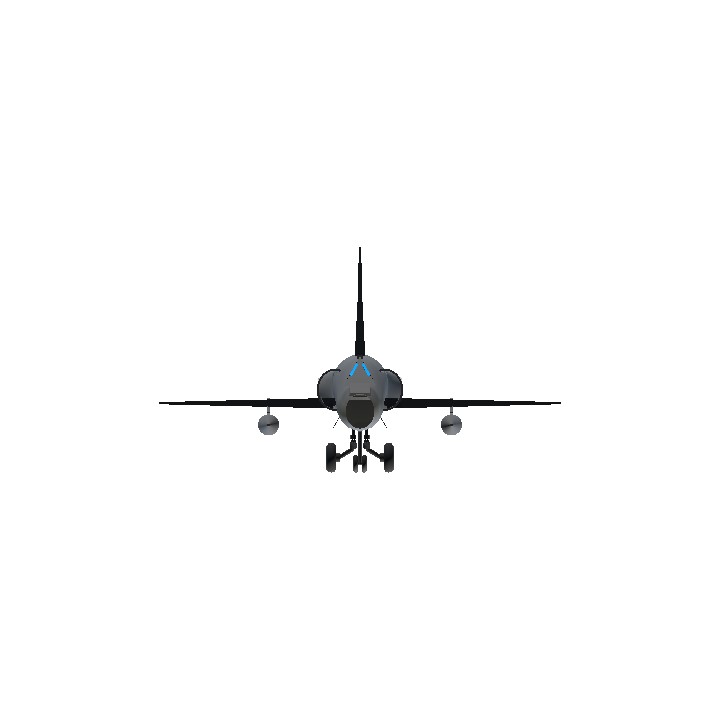blueprint

for flight information

details here
The Convair F-106 Delta Dart is an all-weather interceptor aircraft designed and produced by
The F-106 was designed in response to the 1954 interceptor program. Envisioned as an imagined "Ultimate Interceptor", it was a development of the F-102 Delta Dagger, and commenced as the F-102B prior to being redesignated by the United States Air Force (USAF). The F-106 was designed without a gun or provision for carrying bombs, instead carrying its AIM-4 Falcon air-to-air missiles within an internal weapons bay, its clean exterior was beneficial to supersonic flight. Major differences from the F-102 included the adoption of the more powerful Pratt & Whitney J75 turbojet engine, heavily redesigned air inlets along with a variable-geometry inlet duct to suit a wide range of supersonic speeds, application of the area rule to the fuselage shaping, and a general increase in size. On 26 December 1956, the first prototype performed its maiden flight. After flight testing demonstrated lesser performance gains than anticipated, the USAF ultimately only ordered 350 of the planned 1,000 F-106s.
Becoming operational in June 1959, the F-106 was the primary all-weather interceptor aircraft of the USAF through much of the Cold War era; it ended up being the final specialist interceptor to be used by the service to date. It was never used in combat nor were any export opportunities secured. During the 1960s, a competitive evaluation between the F-106 and the McDonnell Douglas F-4 Phantom II determined the latter to be marginally superior, yet the type continued to be operated for a further two decades due to extensive demand for the F-4 in other roles. Convair proposed various improved models of the F-106, typically focused on the radar, communications, and other avionics, but none of these schemes were pursued. In one high-profile incident over Montana on 2 February 1970, an unmanned F-106 recovered from a flat spin after its pilot had ejected, belly landing relatively intact in a snow-covered field; it was recovered and continued to be flown for numerous years afterwards.
The F-106 was gradually withdrawn from USAF service during the 1980s as the arrival of newer air superiority fighters, particularly the McDonnell Douglas F-15 Eagle, had made the role of dedicated interceptors obsolete. Numerous F-106s would be operated for a time by the Air National Guard. Many withdrawn aircraft were promptly converted into target drones and redesignated QF-106 under the Pacer Six program, which were used up in 1998.[1][2][3] A handful of F-106s were operated by NASA for experimental purposes, such as the Eclipse Project, through to 1998.
screenshot





here is the sound video of the engine click here
Specifications
Spotlights
- Trainzo 5 months ago
- MIGFOXHOUND31BSM26 5 months ago
General Characteristics
- Created On Android
- Wingspan 62.2ft (19.0m)
- Length 111.7ft (34.1m)
- Height 34.9ft (10.6m)
- Empty Weight N/A
- Loaded Weight 95,066lbs (43,121kg)
Performance
- Power/Weight Ratio 4.633
- Wing Loading 51.3lbs/ft2 (250.6kg/m2)
- Wing Area 1,852.4ft2 (172.1m2)
- Drag Points 902
Parts
- Number of Parts 206
- Control Surfaces 6
- Performance Cost 1,478









Great job. I love it.
Tag2
@MIGFOXHOUND31BSM26
@Christiant2
@126
Tag
@F16xl
@Eagleman101SP
@LJh1